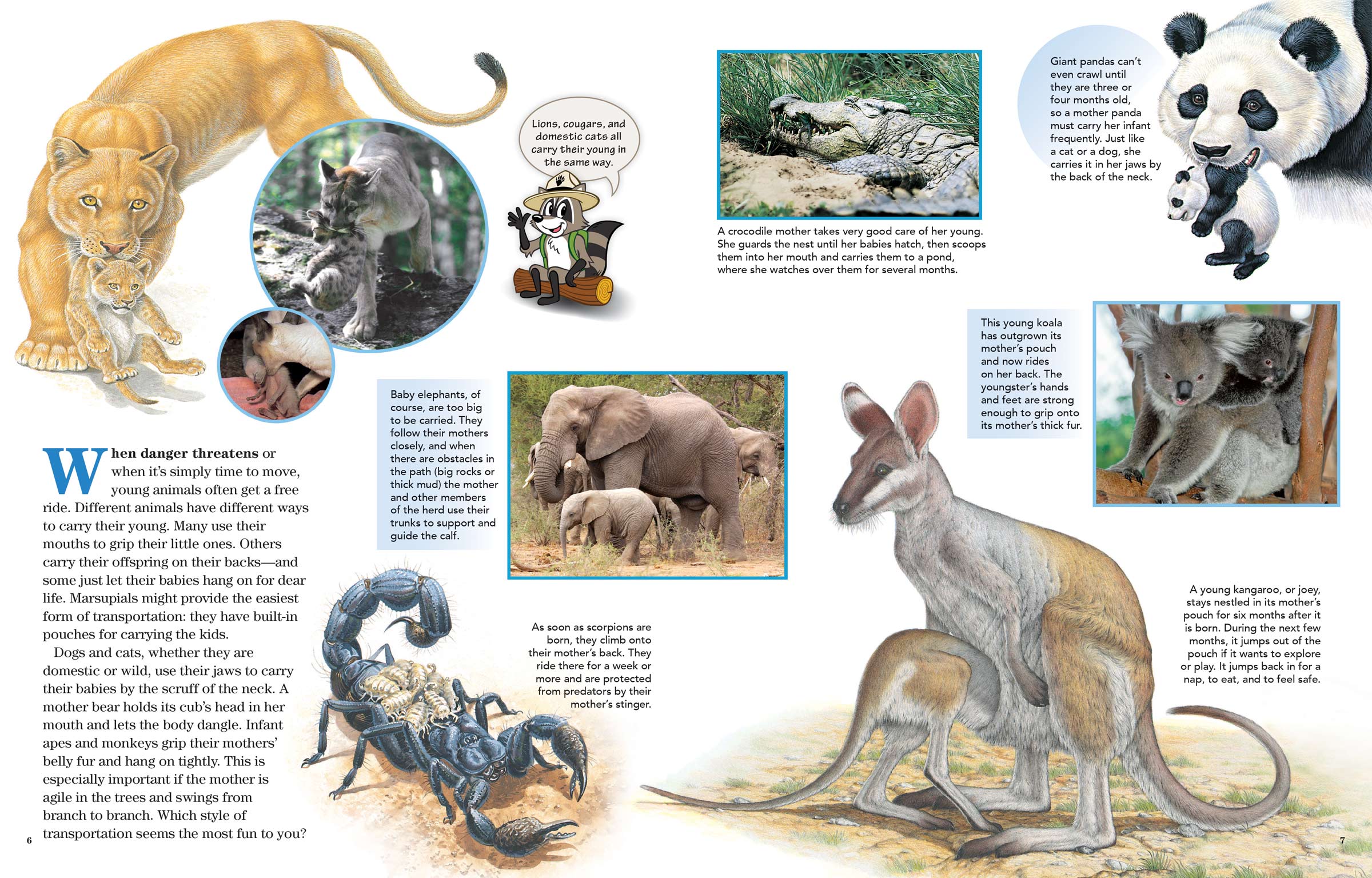
Free Ride
ByWhen danger threatens or when it’s simply time to move, young animals often get a free ride. Different animals have different ways to carry their young. Many use their mouths to grip their little ones. Others carry their offspring on their backs—and some just let their babies hang on for dear life. Marsupials might provide the easiest form of transportation: they have built-in pouches for carrying the kids.
Dogs and cats, whether they are domestic or wild, use their jaws to carry their babies by the scruff of the neck. A mother bear holds its cub’s head in her mouth and lets the body dangle. Infant apes and monkeys grip their mothers’ belly fur and hang on tightly. This is especially important if the mother is agile in the trees and swings from branch to branch. Which style of transportation seems the most fun to you?
Lions, cougars, and domestic cats all carry their young in the same way.
Baby elephants, of course, are too big to be carried. They follow their mothers closely, and when there are obstacles in the path (big rocks or thick mud) the mother and other members of the herd use their trunks to support and guide the calf.
As soon as scorpions are born, they climb onto their mother’s back. They ride there for a week or more and are protected from predators by their mother’s stinger.
A crocodile mother takes very good care of her young. She guards the nest until her babies hatch, then scoops them into her mouth and carries them to a pond, where she watches over them for several months.
Giant pandas can’t even crawl until they are three or four months old, so a mother panda must carry her infant frequently. Just like a cat or a dog, she carries it in her jaws by the back of the neck.
This young koala has outgrown its mother’s pouch and now rides on her back. The youngster’s hands and feet are strong enough to grip onto its mother’s thick fur.
A young kangaroo, or joey, stays nestled in its mother’s pouch for six months after it is born. During the next few months, it jumps out of the pouch if it wants to explore or play. It jumps back in for a nap, to eat, and to feel safe.

